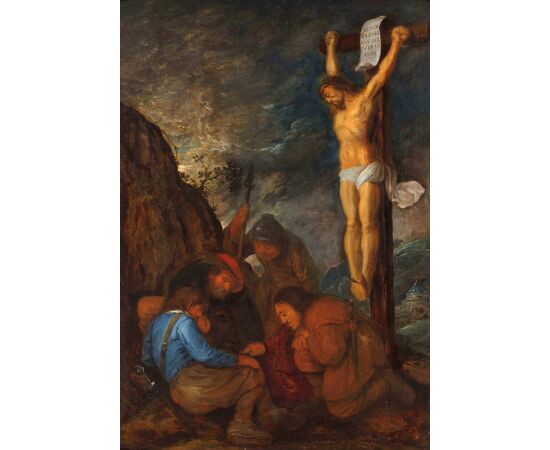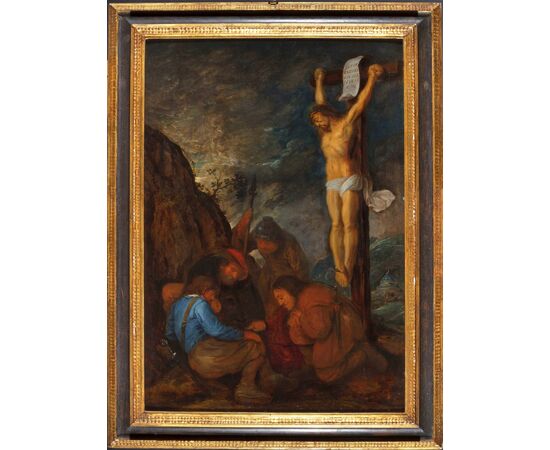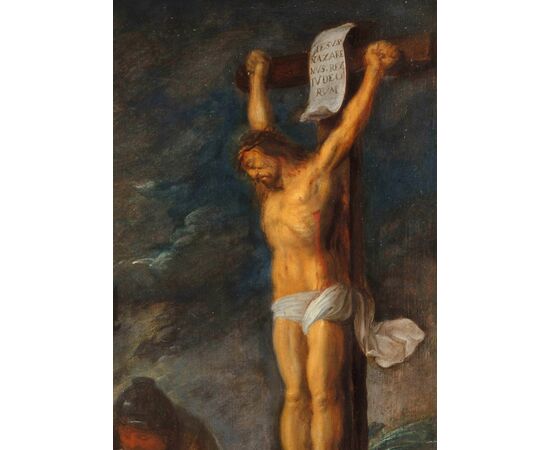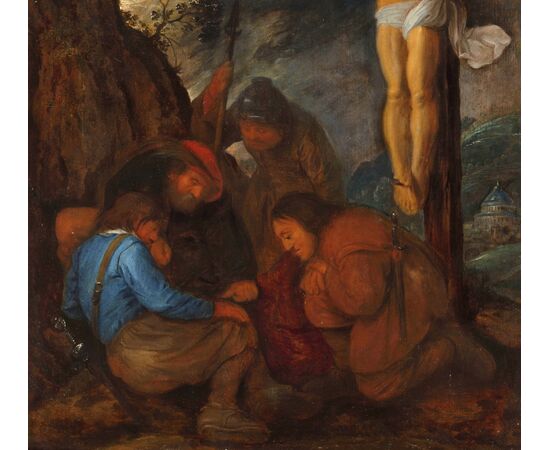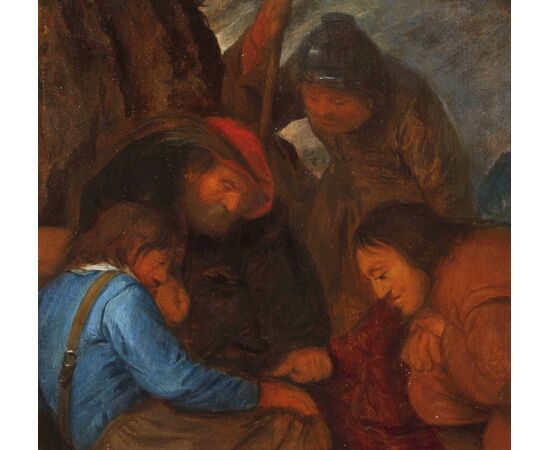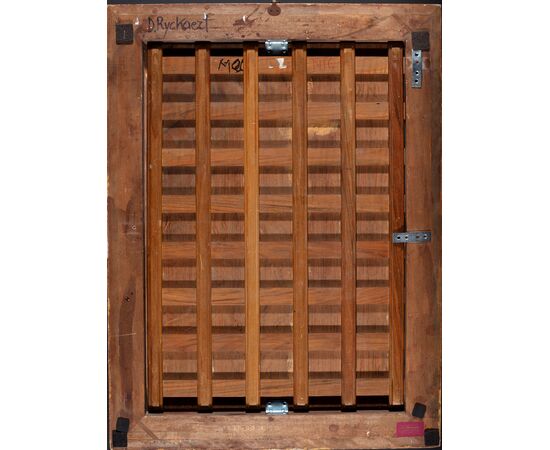Monogrammist H. C. (attr.) (1600-1699), The Tunic Played at Dice, oil on panel
Monogrammist H. C. (attr.) (1600-1699), The Tunic Played at Dice
Oil on panel. Dimensions: cm 60 x 41.5. frame W 55 x H 73 x D 5
Price: confidential negotiation
Object accompanied by a certificate of authenticity
The valuable painting depicts the biblical scene in which the four soldiers in charge of guarding Golgotha, at the foot of the cross on which Jesus is crucified, play dice for the tunic of Christ. The episode is reported in detail in the Gospel according to John (19, 23-24). The soldiers, when they had crucified Jesus, took his clothes and made four parts of them, one for each soldier. But the tunic of Christ was seamless, woven in one piece. Therefore they said to one another, "Let us not tear it, but cast lots for who it should be."
The work has been attributed by the art historian Fred Meijer, an expert in 17th-century Flemish and Dutch art, to the Flemish painter known as "Monogrammist H.C.". This artist was active in the southern Netherlands in the 17th century and is known for his genre scenes: village taverns with peasants playing and drinking, palm readers, merry companies, domestic interiors. The monogram 'HC' (or 'HG') was identified as the signature of the Antwerp artist Willem van Herp. The German biographical dictionary of artists Thieme-Becker grouped together a number of works traditionally attributed to van Herp, which were instead returned to this artist under the name 'Pseudo Herp'. More recently Fred Meijer has been able to identify, through the discovery of some works signed with the monogram H.C., a corpus of paintings that could be returned to this artist. These include works previously attributed to va Herp, Pieter Codde, Adriaen Rombouts, and David Ryckaert III. The Monogrammist H.C. active in Antwerp must be distinguished from an artist, also referred to as Monogrammist H.C., who was nevertheless active in the northern Netherlands as a landscape painter.
From the stylistic comparison with the works now recognized to Monogrammist H.C. there are clear similarities in the type of brushstroke and in the way of treating the figures and faces, the draperies, the backgrounds; equally comparable is the chromatic palette used, played in the tones of browns and red earths from which usually stands out a detail of a dress, treated with a powder blue.
Good state of preservation.

